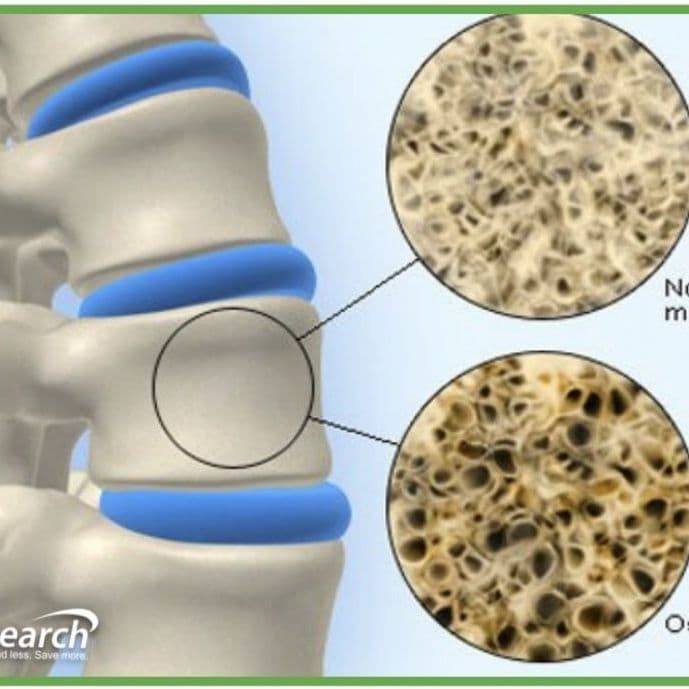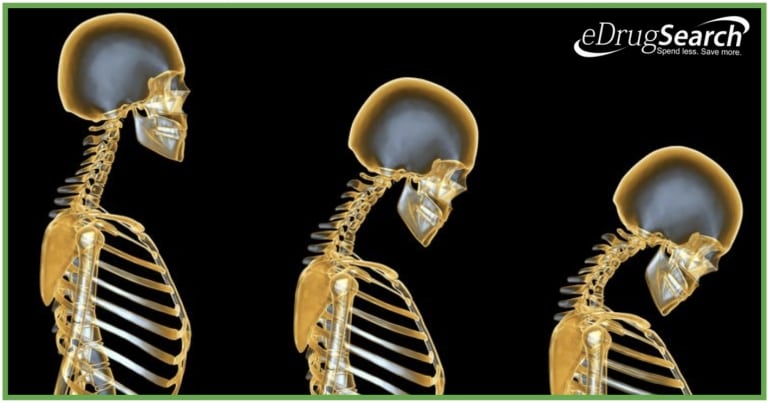The Best Guide to Osteoporosis Medications That Will Help You Choose Wisely
Osteoporosis Medication Consumer Guide
Reviewed by:
Dr. Diana Rangaves, PharmDLast Reviewed On:
Mar 01, 22
4 million people (55%) in the U.S. have either osteoporosis or low bone mass and are over 50 years old. This figure will reach 61 million by 2020. Do you have osteoporosis and are unsure about which Osteoporosis medications are available for you?
Read further to learn more information about osteoporosis and the medications used to treat it.
What Is Osteoporosis?
Your bones remain healthy through constant repair, renewal, and mineral release. This is remodeling, and it has two stages:
- Breakdown and removal of bone
- Generation of new bone
44 million people (55%) in the U.S. have either #Osteoporosis or #LowBoneMass and are over 50 years old. This figure will reach 61 million by 2020. Here are the most popular #medicines used to treat osteoporosis: #DrugPrices #BoneHealth Click To Tweet
This process becomes unbalanced as you age. The old bone gets removed faster than your body can make new bone. This makes your bones weaker and more prone to breaks.
There are certain factors that create this unbalanced remodeling. They include medications, hormonal changes (menopause), decreased activity, and a variety of diseases. Low levels of calcium in your diet can cause your body to take it from your bones and replace it in your blood.
Over time, your bones weaken making them susceptible to fractures. There are many drugs for Osteoporosis available to treat this condition. Your doctor will determine which is best for you.
How Do Osteoporosis Medications Work?
The goal of all drugs for Osteoporosis is to slow the breakdown of bone and increase the formation of new bone. There are two classes of Osteoporosis medication:
- Anabolics
- Antiresorptives
The antiresorptive slow the breakdown of bone. Anabolics stimulate new bone formation. These drugs range from daily pills to yearly intravenous infusions. The one that will be right for you depends on many factors such as your health history and preferences.
Osteoporosis Medications Price Comparison
For your convenience we have linked to all prescription drug prices (shown below) within our database so you can quickly compare and find the lowest prices on many Osteoporosis medications.
Osteoporosis Drugs
The antiresorptive include bisphosphonates, calcitonin, estrogen hormone therapy, and selective estrogen receptor modulators (SERMs). There are only two anabolics approved by the FDA and are forms of the parathyroid hormone.
Bisphosphonates include the following medications:
- denosumab ( Prolia )
- letidronate Didronel
- zoledronic acid Reclast
- ibandronate-sodium Boniva
- pamidronate-disodium Aredia
- risedronate Actonel & Atelvia-DR
- alendronate Fosamax & Fosamax-Plus
Calcitonin drugs include:
- (calcitonin) Miacalcin
- (calcitonin nasal) Fortical
SERMs:
- raloxifene ( Evista )
- bazedoxifene and conjugated estrogens ( Duavee )
Anabolic agents:
- teriparatid ( Forteo )
- abaloparatide (Tymlos)
Information on the Drugs for Osteoporosis

There are a variety of ways you can take bisphosphonates depending on your preferences.
- Atelvia weekly in a pill
- Liquid Fosamax weekly
- IV form of Boniva once yearly
- Actonel daily, weekly, or monthly
- Reclast is a once-yearly IV infusion
- Boniva once a day or monthly in a pill
- Prolia as an injection every six months
- Fosamax either daily or weekly in a pill
The most practical solutions are Boniva and Reclast. The IV infusion takes less than 30 minutes and you’re done for the year. The pill forms require a certain regimen each time you take them.
- Must remain standing after taking it
- Take before you eat first thing in the morning
- After the 30-60 minutes, you can eat and drink
- No eating or drinking anything for 30-60 minutes
You can’t take the pill forms if you have stomach ulcers, inflammation in the stomach, or certain problems with your esophagus.
The calcitonin medications (Fortical and Miacalcin) are the oldest Osteoporosis drugs. They also increase bone density and reduce the risk of spinal fractures. These are sometimes given to patients who can’t take the bisphosphonates.
SERMs prevent osteoporosis by acting like estrogen to avoid bone loss. Evista and Duavee reduce your risk for spine fractures. They also protect women from a certain type of breast cancer.
Finally, the anabolic drugs for Osteoporosis (Forteo and Tymlos) are the only medications that directly increase bone density. They are hormones and work better than the bisphosphonates. The anabolic medications are daily injections.
Forteo and Tymlos have some restrictions. People who have the following conditions should not take them.
- Bone cancer
- Paget’s disease
- Have a metabolic bone disease
- Had radiation therapy for the bones
- Children and adults with high calcium levels
- Have high levels of serum alkaline phosphatase
Osteoporosis drugs only work if they’re taken exactly as your doctor prescribes them. You can’t tell that you have osteoporosis unless you have bone density testing so it may be easy to forget to take them. It is extremely important to take them so that you don’t break a bone.
Considering the Risks and Benefits
The bisphosphonates have a rare risk of thigh bone fractures. People taking high doses of bisphosphonates can get a non-healing area in the jawbone. It is almost always seen when people take high doses for cancer.
Dentists suggest taking care of your teeth when on these medications. Fractures from osteoporosis are very common. But the risks from these medications are rare.
See below for a list of questions that you can ask your doctor when facing this decision.
- How long does it take to work?
- How long will I have to take it?
- What are the side effects? Are they serious?
- What medication are you going to prescribe?
- Is it expensive or does it come in a generic form?
- Why are you giving me this medication and how does it work?
You need to weigh the pros and cons when deciding whether to begin one of these medications. Consider your degree of osteoporosis and the risk of bone fracture. Educate yourself.
Lifestyle Changes That You Can Make
You shouldn’t depend completely on medications to prevent fractures. There are lifestyle changes you can make that will improve your health.
Your diet is important. Foods rich in calcium and vitamin D will help prevent more bone loss. A healthy diet of fresh fruits and vegetables, lean meats, and whole grains and nuts is a good idea for everyone.
Maintaining activity and your fitness reduce the risk of falls and fractures. Weight-bearing exercises and those that improve balance and posture decrease your risk of breaking a bone.
If you smoke, it is important that you try to quit because it speeds up bone loss. Limit alcohol consumption and only drink in moderation. Limit yourself to one drink a day.
Your Osteoporosis medication won’t work if you don’t get enough calcium and vitamin D. You can take a calcium supplement when you don’t get enough in your diet. But it is much better to get most of your calcium from food. Most people need vitamin D supplements since it’s hard to get enough in the diet.
Other Things That You Should Consider
Women lose bone density at a faster rate (1.5-2.0% each year) in the first 10 years after menopause. It’s important that you take preventive measures during this time.
Osteoporosis is more common in females over 50 with a low body weight and a family history. Caucasian and Asian women have the highest risk. Men develop osteoporosis later than women but are more likely to have fractures.
If you have certain risk factors, you should get a bone density screen (Dexascan) at an earlier age. These include long-term steroid use, rheumatoid arthritis, smoking, heavy drinking, and low body weight.
Other measures that you can take to prevent falls and fractures include:
- Have adequate lighting
- Wear rubber-soled shoes
- Grab bars in your shower
- Use rails on stairs for support
- Use a cane or walker to make you more stable on your feet
- Put runners on slippery floors and non-skid pads under rugs
The goal for everyone at risk of developing osteoporosis is prevention. Fractures increase the decline in health and death rates as people age.
The Bottom Line
Osteoporosis is a “silent” disease because you don’t know you have it until you get tested. There are steps that you can take to prevent osteoporosis. And there are also things that you can’t control. Taking care of your health and following a treatment plan made by your doctor is very important.
#Osteoporosis is a #SilentDisease because you don't know you have it until you get tested. There are steps that you can take to prevent it. Here are the most popular #medication used to treat osteoporosis. #DrugPrices #Bone #BoneHealth Click To Tweet
If you have any of the risk factors, talk with your doctor right away about getting screened. Blood or urine testing for bone resorption markers will tell you if your Osteoporosis medications are working.
The outlook for people with osteoporosis is better when treatment for this condition begins early. Hip fractures cause increased death rates in the elderly in the following year. It also makes it hard for them to get back their level of functioning. Many end up in nursing homes.
Educating yourself about osteoporosis will help you understand the disease and your treatment options. A good place to begin is with the National Osteoporosis Foundation. There you will find information about the diagnosis, treatment, and clinical research studies currently underway. You can find support and resources available through this organization also.
Remember to take a list of questions for your doctor at each appointment. Don’t leave until you completely understand your options and treatment plan. A close relationship with your doctor is important in managing this disease.
Check out our blog to compare the information available for all these medications.
Join Our Free Newsletter
Get a weekly dose of money-saving tips on your medications, drug side effects alerts, drug interaction warnings, free prescription coupons, late-breaking safety information and much, much more!